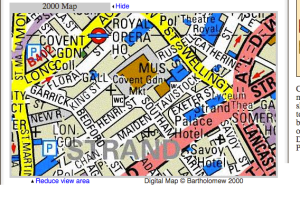In the Holme’s short story, “The Blue Carbuncle,” the Covent Garden Market in London is visited in the story. Here, Holmes talks to a goose salesman named Breckenridge who sold the goose that had the carbuncle in its crop.
The Covent Garden Market is farmer’s market and shopping center located in the center of the Covent Garden District of London which is a very popular shopping and tourist destination.
Here is what the Market looked like in 1896.
In the story, the area Watson and Holmes have traveled to the market, has been described as a slum. According to the Booth Poverty map, most of the area around the market is middle class, especially right near the market, though there are some light and even darker blues the further you get away from the market. These people may have ran into the markets and stole food if they could not afford to feed their families adequately.
One very interesting fact that I have learned from British-History.co.uk is that there has been a period where many people wanted the market to change its location mainly due to congestion from a boom in production of produce. In the 1960s, an increase in traffic to the area has caused major problems around the area. So the “original” market is not here anymore. It has actually has moved to a different location in Southwest London (in Nine Elms). The location (called the New Covent Garden Market) is much more convenient for modern London, as there is a large parking garage that is able to accommodate many vehicles as well as a delivery trucks unloading to the store.

Today, the original site is now a large shopping center complete with pubs, cafes and small stores. This makes Covent Garden more akin to Times Square as many people come here. Covent Garden does have one major advantage though, it is indoors! So rain won’t stop you.
I thought it was interesting to learn that a small plot point in The Blue Carbuncle can be full of rich history. This is just another part of London’s charm that is why many people want to visit this city.













